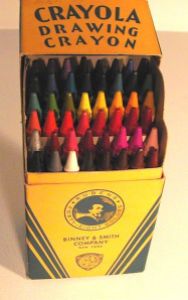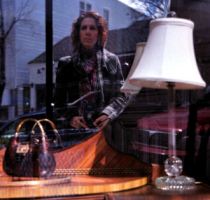teachers whom i think sucked
Damage Done: Guest Post by Leonore Rodrigues
Today’s guest blogger is Leonore from As a Linguist. Leonore and I connected because of our love of language, weird words and proper punctuation. As it turns out, we have quite a few real life things in common. We are both pretty OCD, and we both love Wuthering Heights. Wait, I think she loves Wuthering Heights. Now I’m all confuzzled. Wait, that’s a made up word. Leonore might not like that very much….

My guest blogger today is Mark Kaplowitz. I started cyber-crushing on MarKap the minute he came onto the blogging scene. Many of his earliest pieces were nostalgic pieces that made me long for the days of metal lunchboxes (like he wrote about HERE) and action figures (like he wrote about HERE). His writing is punchy and hilarious. I can’t understand why he hasn’t been discovered and published already. I would totally buy his books. (You hear that publishers? He’s already sold one copy!) You can find Mark’s blog HERE and follow him on Twitter at @MarkKaplowitz. Thanks for sharing your teacher memory, Mark. I now understand your fear of crayons.
• • •
My First Grade Teacher Must Have Had Stock In Crayola
Ms. Deagle seemed normal on the first day of first grade, as she stood at the front of the room and announced that she rewarded good work with scratch ‘n’ sniff stickers. I thanked my lucky stars that I had not been assigned to the ancient Mrs. Krabcik, who, it was rumored, bit the erasers off students’ pencils to make errors impossible to hide.
There had been no stickers in Kindergarten, and I was excited that, at last, my brilliance would be properly remunerated. As Ms. Deagle handed out a purple-inked mimeograph, called a “ditto,” I prepared to impress my new teacher with my wizardry at addition or spelling.
The ditto, however, contained neither sums nor words to be completed, but an uncolored picture of children sitting in a classroom. “I thought we would start first grade with a little coloring assignment,” Ms. Deagle said, standing with her hands locked behind her back. “I make two assumptions about all of your coloring work. One, that all of the pictures will be outlined in black. And two, that none of the colors will smudge. Please check your work before you hand it to me, to make sure my assumptions hold true.”

I outlined the ditto in black and colored it in, making the wisest selections I could from my shiny new 64-pack of Crayola crayons, with perfect points and untorn wrappers. The ditto took close to an hour to complete, and blackened the heel of my coloring hand. I was tired but ready to proceed to more intellectually challenging material.
But the second assignment was another coloring ditto, as was the one after that. My first day of first grade was devoted entirely to coloring, and the last assignment of the day — a beach scene that made me long for the summer vacation just ended — had so many items that I had to take the ditto home with me. On the morning of the second day, we lined up before Ms. Deagle’s desk to have our work reviewed and, if acceptable, obtain a sticker for it. My stomach churned as my turn approached.
“Not bad, Mark,” Ms. Deagle said, scanning my work like a museum curator. “But I can see where you let the black outlining bleed into the ocean here. Please be more careful in the future.” I said I would, and thanked her for the sticker she pressed onto the top left corner of the ditto. As I scratched the sticker and inhaled the aroma of pepperoni pizza, I rejoiced that I had survived the coloring trial.
But the arithmetic that I’d been counting on did not come that day, either. Instead, we were given more coloring to do: an 11×17 mural of school buses lined up in front of a school, ready to cart happy children away to happy homes. I wished that I could join them. I used more care when coloring adjacent to black outline, but still the crayon bled, making my buses look muddy.
As the weeks and months passed, the coloring assignments did not abate. Coloring appeared to be the only skill that Ms. Deagle deemed worth teaching. Once in a while we would get a math or reading assignment—a treat to be saved for last and savored—but it was a momentary and inconsequential digression from our art.
Imagine being six years old and coloring until 10 o’clock every night. A century earlier and I could have been standing before a lathe. True, I was not going to lose a hand coloring. But sometimes it sure felt like it. And not all students were as skilled as I.
Emmy, one of my classmates, was quiet and had no friends that I could see. She was also slow in her work and had trouble following directions. She colored in defiance of the lines, saved her black crayon for tests that required a No. 2 pencil, and was so behind in her assignments that Ms. Deagle would lock her in the classroom during recess.
When that punishment did not work, Ms. Deagle locked Emmy in the closet. As we filed out the door for lunch, each of us peered through the closet window at a scared and timid Emmy looking out. I don’t know if Emmy’s work improved after that, but mine certainly did.
By the spring, my parents had compared notes with the notes of my classmates’ parents, and decided it was time for a meeting with the principal about dear Ms. Deagle. I remember hearing about the meeting, and that the principal had promised to do something. I also remember how nothing changed. But I survived Ms. Deagle’s first grade and moved on to second grade where, in only a few short weeks, I relearned the alphabet. Emmy was left back — with another teacher, I hope.
I picture Ms. Deagle today, retired and watching cable news programs in her den. In one segment, parents sit with their child and a lawyer, and say they are suing their child’s school because “chaining students to their desks is an unacceptable practice in the 21st Century.” And Ms. Deagle shakes her head, scratches and sniffs a nearby sticker, and calls her sister to complain about how educational standards have slipped.
What was the most lame assignment you ever had to do in school? Or what was your least favorite color in the 64-box of crayons.
• • •
If you have writing chops and are interested in submitting a memory about a teacher you had and can explain how that person helped you (or really screwed things up for you), as well as the life lesson you took away from the interaction, I’d love to hear from you! Contact Me. Essays should be around 700-800 words.
If you write for me, I’ll put your name on my page of favorite bloggers!

Today’s teacher story comes from guest blogger Leonore Rodrigues from As a Linguist. Leonore and I connected because of our love of language, weird words, and proper punctuation. As it turns out, we have quite a few real life things in common.
Leonore’s a teacher and she just wrote a lovely piece called Intermission. It is exactly what I’ve been feeling recently, and she wrote it so beautifully. Please check it out after you read what she wrote here today. Also feel free to follow her on Twitter at @asalinguist. Thanks for helping me out, L.
• • •
Damage Done
I can remember the names of most of my teachers I’ve had from kindergarten until graduation from high school, which is something about me that freaks out my boyfriend just a little bit. I try to tell him that there is still plenty that I don’t remember about school, but then I go and spoil it by mentioning that I also remember most of my first-day outfits.
I don’t know why these details stick, but the truth is that I do remember not only names, but little details about most of my teachers: my second grade teacher hated when we used short pencils; my fifth grade teacher showed tons of film strips; my ninth grade English teacher used the word ‘bitch’ on the first day of class and we loved her for it; my eleventh grade trig teacher smelled like cigarettes, coffee, and chalk; and my twelfth grade Calculus teacher was sweet and flirty, but was probably just a stone’s throw from being a dirty old man instead.
These details stand out but they don’t mark the teachers as being particularly great or terrible. When I do think of my favorite teachers, different memories arise. My sixth grade Math and History teacher’s silly manner made his classes fun and interesting. My eleventh grade American History teacher taught me how to write clearly and concisely, and he took me seriously, which helped me gain more confidence in myself and my ideas. My twelfth grade English teacher – who is probably my favorite teacher of those years – built on that confidence and challenged us every day with thought-provoking lessons.
Unfortunately, not all of the memories were good.
My third grade teacher, Mrs. G. was rather stand-offish, which in and of itself wasn’t a bad thing, but it didn’t win her many supporters, either. Her lessons were straight-forward and predictable, which for me usually meant boring. I thrived when a teacher gave us unusual projects or pushed us with harder material. Even clumsy classroom manners were forgiven as long as the teacher had passion and energy to inject into the lesson. Mrs. G. gave us neither creative nor passionate lessons.

The moment that stands out in my mind was the day she assigned a project to make a puppet. It didn’t matter what kind of puppet it was – it could be a sock puppet or it could be a 10-string marionette for all she cared. It could be a princess, a dog, or a prison inmate. We were left to our own devices and given no examples, guidelines, or criteria.
I’d seen some dolls that T, my best friend, had in her house that her mother had made. We talked about it and she said she was probably going to do a puppet similar in style to the dolls. Not having the slightest idea of what kind of puppet I could even hope to make, I asked Mrs. G if T and I could do the same sort of puppet if I couldn’t think of anything else to do.
She not only told me “no” about the puppet project, but she also quite bluntly told me that I depended too much on T, that I should be more original and not just copy my friend, and that it probably wasn’t even healthy for us to be such close friends anyway. I came away from school that day with the sense that my teacher thought I was a parasite and a fake. Not knowing any better, I thought she must be right. I felt like a girl with any real talent, intelligence, or integrity wouldn’t need to get ideas from anyone else, and so it must be true that I’m useless on my own. Nothing she did for the rest of the year ever disabused me of that notion.
At the end of the year, Mrs. G. assigned T and me to different fourth grade classes so we could break our apparent co-dependence on each other. We stayed just as close as we’d been, despite the separation. Slowly, I began to repair the damage that had been done to my self-esteem. To this day, however, I find that there’s still a tiny voice in the back of my mind that ask, “Was she right? Was I really just getting valid help with a project, or was I copying? Am I really just a hack?”
A teacher’s influence can indeed be deeply-felt for many years afterward. I wish my 9-year-old self had gotten angry and fought back, but I was lucky to have good teachers in the following years to combat the damage done. It took a long time, but at least now my 40-year-old self knows how to fight back.
Was there a teacher who really sapped your self-esteem? Did you ever get it back?
• • •
If you have writing chops and are interested in submitting a memory about a teacher you had and can explain how that person helped you (or really screwed things up for you), as well as the life lesson you took away from the interaction, I’d love to hear from you! Contact Me. Essays should be around 700-800 words.
If you write for me, I’ll put your name on my page of favorite bloggers!